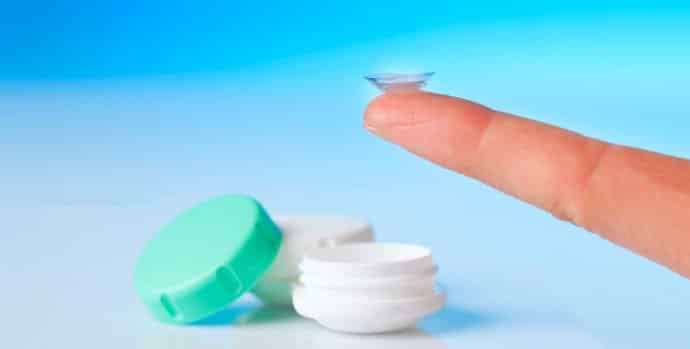Health
Do Not Make These Mistake While Using Contact Lenses!
Contacts lens are supposed to make life easier. They are generally more convenient than eyeglasses, but all know that convenience comes with a cost: The fact that it is almost too easy to make common contact lens mistakes that could be hurting your eyes. And that’s kind of scary to think about. After all, how can something so small, something that you can’t even feel, and something which is supposed to help you potentially cause so much damage? Well, for the most part, it comes down to proper care.
Not rubbing your contact lenses when cleaning them

When you are tired or pressed for time, the last thing you feel like doing is rubbing your contact lenses clean with lens solution. But if you want to maintain the health of your eyes and prevent infections, it’s essential to rub before rinsing.
Just rinsing is not enough to clean your lenses. Rubbing helps to remove any protein deposits stuck on the surface. It is like soaking your clothes in soapy water instead of scrubbing them. Manual rubbing is a must if you want to remove infection-causing dirt and deposits from the lenses.
Decanting lens solution into smaller bottles

You might not think anything of this, especially when you are packing for a trip. But transferring a sterile solution from its original container to another increases the risk of contamination. Also, the empty bottles may have been used before and may be contaminated with biofilm a thin, slimy film of bacteria that adheres to a surface.
If you are traveling, buy travel-size bottles of lens solution, or switch to daily disposable lenses so you don’t have to lug bottles of the solution around. Daily disposable lenses are also less likely to cause problems like infections or allergies.
Using old or dirty contact lens storage cases

Old or dirty lens cases can cause eye infections. Immediately after removing your lenses from the case, discard the used storage solution. Rub the case with clean fingers for about five seconds, and then rinse it with contact lens disinfection solution before wiping it dry with a clean cloth.
Avoid rinsing the case with tap water. That has been linked with an increased risk of Acanthamoeba keratitis, a rare but serious condition where amoeba attacks the cornea, causing permanent vision loss or even blindness. After wiping the case dry, store it in a clean, dry spot with the case face-down and the caps off.
You should also change your contact lens case every three months, as using a case for too long can raise your risk of developing a corneal ulcer, an open sore on the cornea caused by an infection.
Touching the tip of the lens solution bottle

When using contact lens solution, hold the bottle and avoid touching the tip, no matter what. Your fingertips may carry harmful microorganisms, and if these find their way into the bottle, you risk contaminating all of the solutions.
Also avoid letting the exposed tip touch surfaces such as the counter top, as this may contaminate the solution with bacteria or fungi.
Rinsing or storing your contact lenses with tap water

This is especially dangerous for soft contact lenses, to which many different kinds of materials and germs can stick. Tap water contains many microorganisms like bacteria, fungi and Acanthamoeba parasites, the contact lens storage solutions it cannot kill these germs. Rinsing lenses with tap water, therefore, does more harm than good.
If you store your lenses in tap water, the germs could multiply and form a biofilm on the lens. If these germs then get onto your eye from the contact lens, a bad corneal ulcer may result, leading to scarring and blurred vision.
You should always rinse your lenses with the recommended solution and rub the lens while doing so, to remove the sticky debris. If you are using a three-in-one solution, you should then soak your lenses in the same solution overnight.
Showering or swimming with your contact lenses on

It is a good idea to remove your contact lenses before showering or going for a swim. This will help reduce the risk of water-borne organisms like acanthamoeba and Pseudomonas attaching to your contact lenses and causing a lens-related infection.
Applying makeup before putting on contact lenses

Makeup is a source of contamination for contact lenses. This is why you should always put on your lenses before applying your makeup. Doing it in the other way around can cause makeup particles to transfer onto the lens and to enter your eyes, which leads to eye infections.
Using wet fingers to put on contact lenses

Our hands are never perfectly sterile. So before putting on your contact lenses, wash your hands with soap and water to get them reasonably clean. Some bacteria can still be transferred when you put on your contact lenses, and the risk is somewhat higher if your hands are wet.
All of the things that could happen to your eyes due to mistakes you might make with your contact lens which is pretty scary. But knowing how to care for your lenses and when to remove them will help you continue to see clearly.


